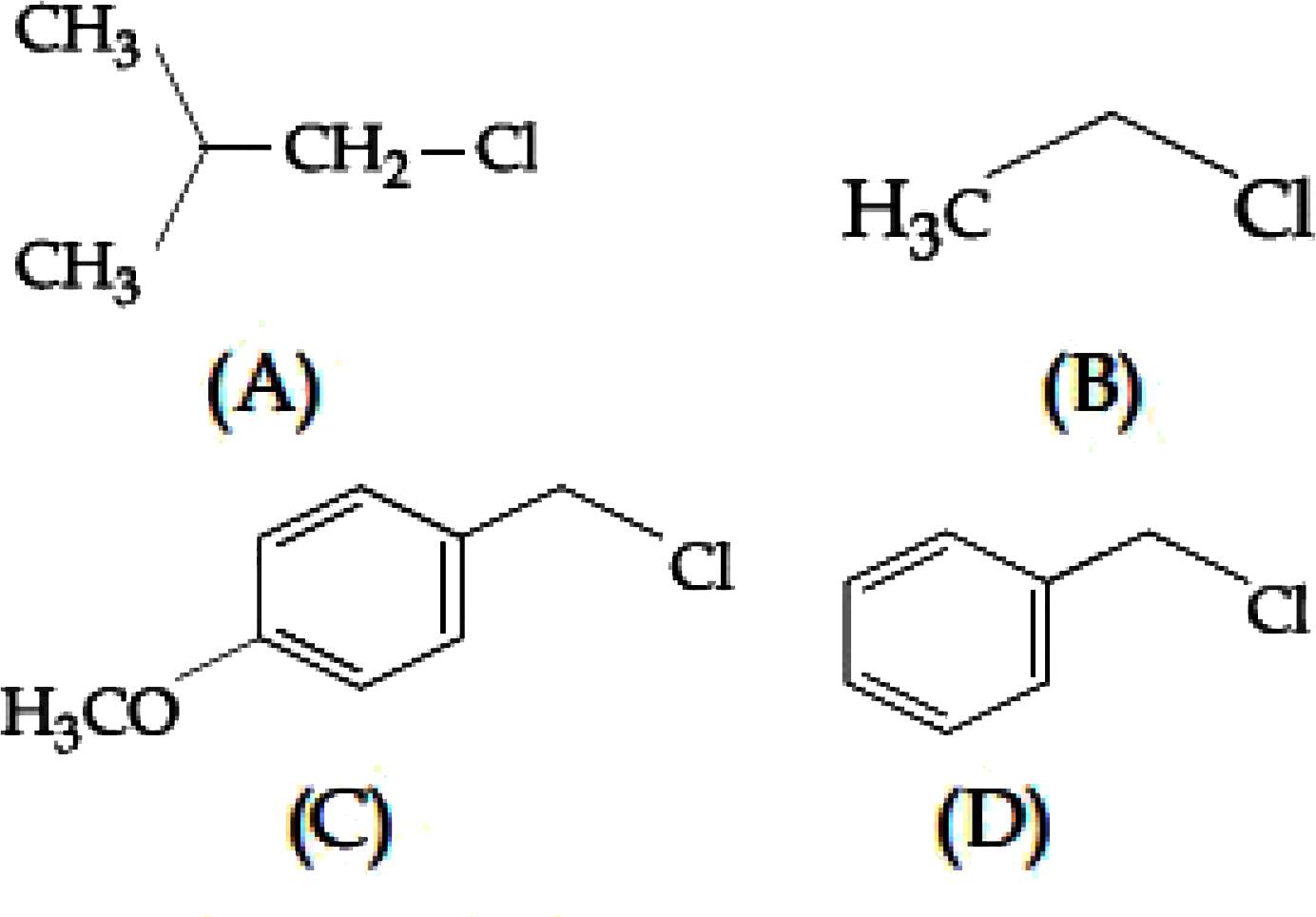Assertion : Crown ether acts as phase transfer catalysis and increases reactivity.
Reason : They strongly complex cation and leave anion (nucleophile) with increased reactivity. Solution in Malayalam
If both (A) and (R ) are correct and (R ) is the correct explanation of (A)
If both (A) and (R ) are correct, but (R ) is not the correct explanation of (A)
If (A) is correct, but (R ) is incorrect
If both (A) and (R ) are incorrect
The correct Answer is:A
Step by step video, text & image solution for Assertion : Crown ether acts as phase transfer catalysis and increases S_(N)2 reactivity. Reason : They strongly complex cation and leave anion (nucleophile) with increased reactivity. by Chemistry experts to help you in doubts & scoring excellent marks in Class 11 exams.
Topper's Solved these Questions
- BOOK - BRILLIANT PUBLICATIONCHAPTER - ORGANIC CHEMISTRY : SOME BASIC PRINCIPLES - PART II (ISOMERISM AND REACTION MECHANISM) EXERCISE - LEVEL-II40videos
ORGANIC CHEMISTRY : SOME BASIC PRINCIPLES - PART II (ISOMERISM AND REACTION MECHANISM)
- BOOK - BRILLIANT PUBLICATIONCHAPTER - ORGANIC CHEMISTRY : SOME BASIC PRINCIPLES - PART I (NOMENCLATURE) EXERCISE - LEVEL-III45videos
ORGANIC CHEMISTRY : SOME BASIC PRINCIPLES - PART I (NOMENCLATURE)
- BOOK - BRILLIANT PUBLICATIONCHAPTER - ORGANIC CHEMISTRY : SOME BASIC PRINCIPLES - PART III (PURIFICATION AND CHARACTERISATION OF ORGANIC COMPOUNDS) EXERCISE - LEVEL-II (ASSERTION-REASON TYPE)15videos
ORGANIC CHEMISTRY : SOME BASIC PRINCIPLES - PART III (PURIFICATION AND CHARACTERISATION OF ORGANIC COMPOUNDS)
Similar Questions
In the following compounds, nucleophile and the leaving groups are in the same molecule:

These dual nature species can undergo intramolecular and intermolecular nucleophilic substitution. Intramolecular substitution reaction is possible in: I, II; II, III; III, IV; IV01:43View SolutionGive the IUPAC name of the following compound:
 00:55View Solution
00:55View SolutionAssertion : Sulphur present in an organic compound can be estimated quantitatively by Carius method.
Resaon : Sulphur is separated easily from other atoms in the molecule and gets precipitated as light yellow solid.03:09View SolutionCrown ether acts as phase transfer catalysis and increases SN2 reactivity.
They strongly complex cation and leave anion (nulceophile) with increased reactivity.03:26View SolutionThe correct increasing order of the reactivity of halides for SN 1 reaction is :
05:22View SolutionThe increasing order of reactivity of the following bromides in SN1 reaction is
 03:26View Solution
03:26View SolutionWhich is least reactive towards nucleophilic substitution (S_(N^(2)))
03:22View SolutionThe correct increasing order of the reactivity of halides for SN1 reaction is:
02:04View SolutionWhich is least reactive towards nucleophilic substitution (SN2)
05:03View SolutionAssertion : Anhydrides are more reactive than ester for nucleophilic substitution
Reason : R.COO– is better leaving group than R–O–10:35View SolutionThe correct increasing order of reactivity of halides for S_(N)2 reaction is
View SolutionIn the nucleophilic substitution reactions (SN2 or SN1 ) , the reactivity of alkyl halids follows the sequence
05:32View SolutionArrange in the order of increasing SN1 reactivity and explain:
 07:54View Solution
07:54View SolutionThe correct increasing order of the reactivity of halides for SN' reaction is -
04:09View SolutionIncreasing order of reactivity of the following compounds for SN1 subsitution is:
 01:56View Solution
01:56View SolutionIncreasing order of reactivity of the following compounds for SN1 substitution is :
 04:06View Solution
04:06View Solution

